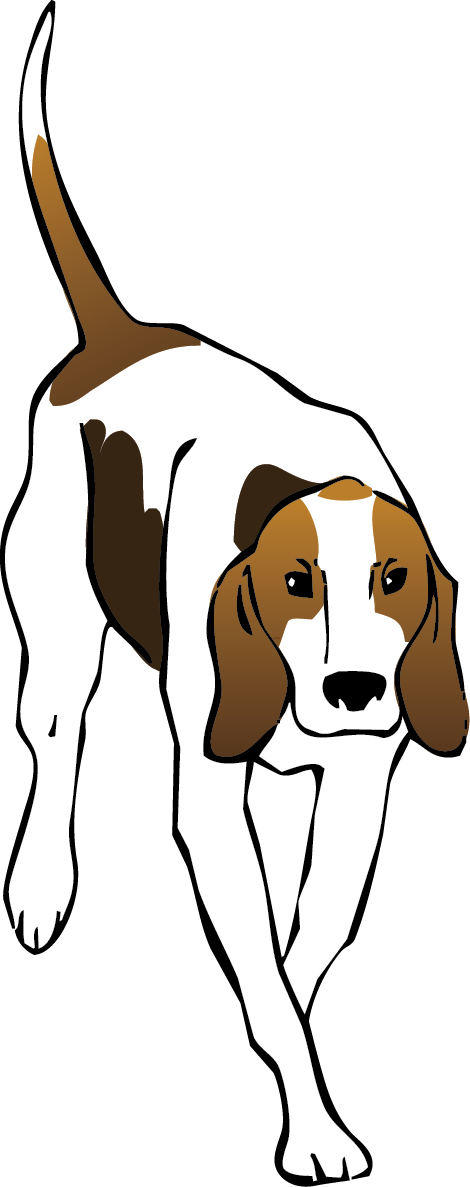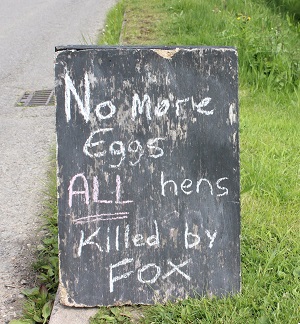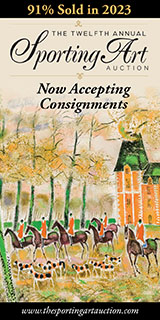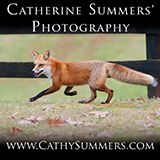Wildlife
With the Fox Cubs at Dusk
As the month of March advances to its close, we all know that newly-whelped fox cubs are at this very moment huddled out of sight and underground, not yet having seen nor felt the light of day. We wait and watch, hoping for a sight of them, but more likely contenting ourselves with occasional daylight views of the vixen or dog fox now working overtime day-shifts to feed a voracious and growing family. ―Ed.
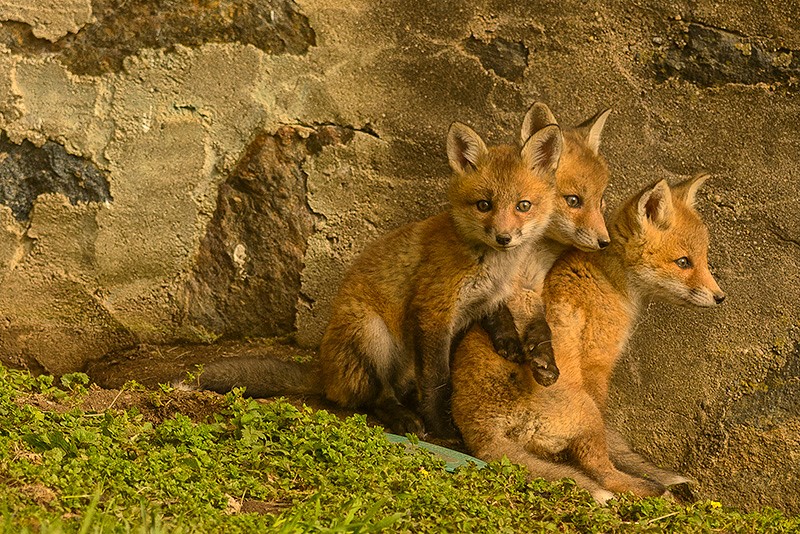 Jim Graham photo
Jim Graham photo
Yesterday I visited a Fort. It was one of the many great, circular, centuries-old Danish structures that are so numerous in this eastern part of County Cavan, Ireland. Its ramparts and fosses are still well-defined despite the ravages of ages. The inhabitants used it as their home in times of peace, and as their stockyard and stronghold when invasion threatened. The inhabitants evidently disliked isolation, and their fortress was erected on such well-chosen eminence that they were in full view of their neighbours on some adjoining hill; indeed it is a local belief that seven neighbouring forts are visible from any particular one.
Close Encounters with My Vulpine Friends
James Barclay was born to foxhunting. He, his sister, two brothers, mother, father, grandfather, and great-grandfather all served as Masters of Foxhounds—a family way of life that began in 1896. James served as Master of five hunts from 1983 to 2012: the Essex and Suffolk, Fitzwilliam, Cottesmore, South Wold, and Grove and Rufford. Click for a fuller introduction to James Barclay in Norm Fine’s Blog.
With over two hundred years involvement with various packs and types of hounds under our belt, you will understand it was and always will be the number one rule in the Barclay family to have the greatest respect for our quarry species, be it the fox, deer, or hare. The pleasure they give us is immense, and this comes from not only close observation on a hunting day but during the summer months when they are all, in their own distinctive ways, equally fascinating.
It is the fox, however, that has taken up a very large part of my life, and hardly a day passes when he doesn’t enter my mind in one way or another. And more than likely he will be discussed at some point, especially when he is being blamed for eating someone’s prime poultry! Whenever foxes are talked about, however, it is generally with a large degree of affection, except of course on the day a heinous crime has been committed in his role as the ruthless killer!
My pleasure in writing this has come from looking back and remembering moments when my vulpine friends have behaved in ways that remain etched on my mind. In the past, I have recollected their somewhat strange habits after the death of a particularly well-loved character. This enters another realm, although there are places where both realms meet and it is then when it really does become all the more fascinating!
The Gray Fox
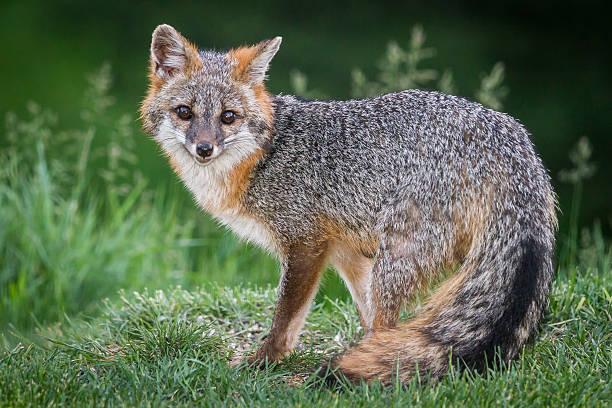
Blane Klemek, a wildlife manager with the Minnesota Department of Natural Resources, describes gray foxes as cat-like and rarely seen. Cat-like in that it is the only canid that can climb trees with ease. Which it does to escape predators or pursue its own prey.
As Human Population Expands, Wildlife Increasingly Relies on People Food
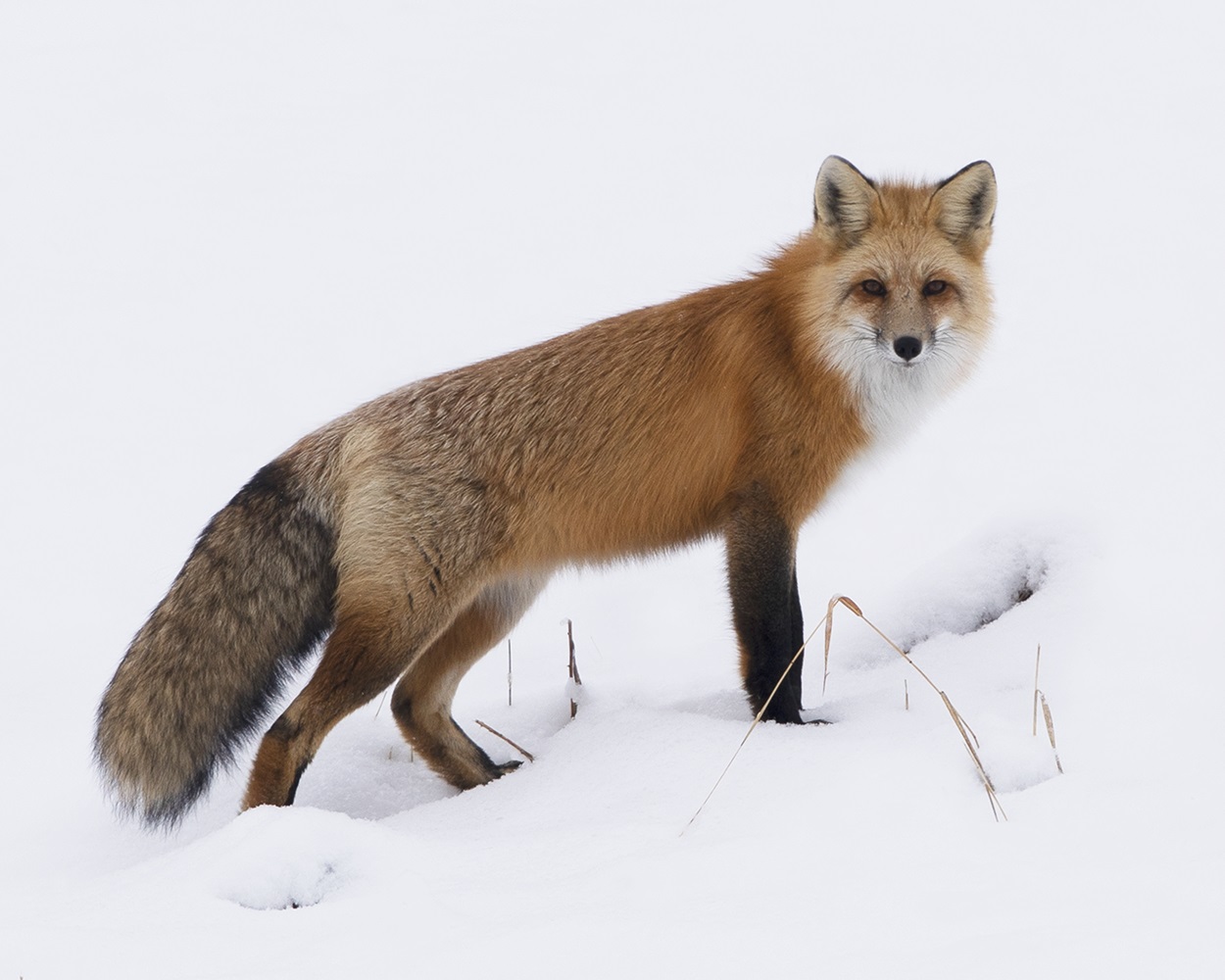 Red Fox / Mike Roberts photo
Red Fox / Mike Roberts photo
A recent study reveals that wild mammals—even big predators—are getting portions of up to half of their diet from human leavings, crops, or smaller mammals that live near people. The study included wolves, mountain lions, bobcats, coyote, foxes, fishers, and martens across the country.
These wild animals are relying less and less on foods found naturally, as human population spreads and presents wildlife with domestic dietary alternatives. The outcome naturally puts wild creatures in conflict with one another, and leads to more human-carnivore encounters in territorial boundary areas and suburban backyards.
Reflections on Reynard
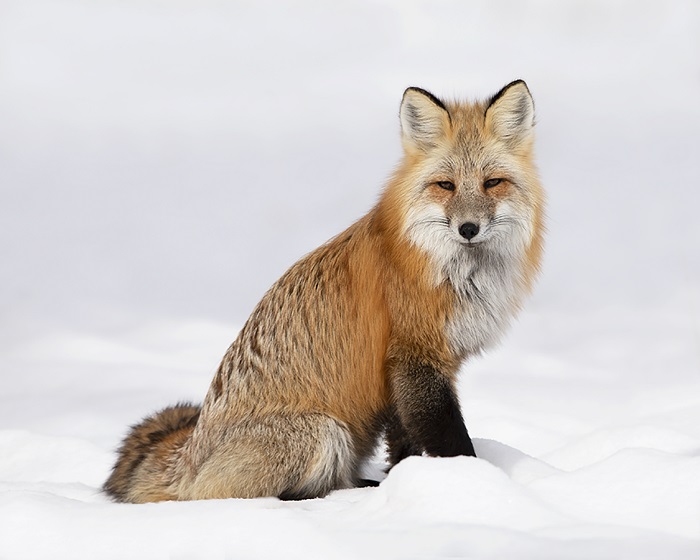 The last frame of the day! Photographed in Yellowstone National Park by Mike Roberts with Canon EOS 5D Mark IV camera fitted with Canon 600mm lens. Tripod Head: Wimberly WH-200 (with quick release plate). Tripod: Gitzo Mountaineer (carbon fiber).
The last frame of the day! Photographed in Yellowstone National Park by Mike Roberts with Canon EOS 5D Mark IV camera fitted with Canon 600mm lens. Tripod Head: Wimberly WH-200 (with quick release plate). Tripod: Gitzo Mountaineer (carbon fiber).
Click image for a larger view.
As a naturalist I’ve never considered anthropomorphism an appropriate concept. Yet, even in my mind, the red fox has long worn the mask of a humanistic villain. English literature and folklore is littered with fox personifications, as is Native American culture. With eyes that can stare into the depths of one’s soul, and those downright sneaky behavioral traits, Vulpes vulpes remains one of my favorite, but most difficult subjects to photograph in the wilds of America. So lay another seasoned chunk of oak on the andirons, pour a steaming cup of tea, pull up a chair, and allow me to share this paramount photography adventure.
I Was the Vixen’s Designated Kit-Sitter
Dave Ellis photo
I had found the den of a family of red foxes and was going early each morning to take pictures of the mother and her young kits. The kits were five or six weeks old, and were at that curious, exploring stage. Their life at that point pretty much consisted of eat, sleep, and play.
The father did not seem to be around, so the vixen had a lot of work to keep her four kits fed and safe. She was not stupid. She soon figured out that she could make use of me. She had to spend several hours each day off in the woods hunting in order to keep the little ones fed, which meant that without a father around, she would have to leave them alone and subject to being found by other predators.
A Brush With a Fox
Illustration by Doug Pifer
The late Matthew Mackay-Smith—internationally renowned veterinarian, editor of EQUUS magazine, foxhunter, and elite endurance rider—began foxhunting at the age of eight behind his late father, Alexander Mackay-Smith (ex-MFH, author, and longtime editor of The Chronicle of the Horse). Matthew left a treasure trove of hunt reports and countryside observations which, thanks to the permission of Matthew’s wife, Winkie, FHL will publish from time to time.
In my veterinary rounds in the country of Mr. Stewart’s Cheshire Foxhounds (PA), I often took a shortcut by using West Road, a primitive gravel lane with grass between the tire tracks. There, on a blustery March afternoon, I spied a feminine fox upwind of me, nonchalantly toting half a rabbit. In the gloaming, she was heading toward her den with the family supper. I stopped. She stopped, too, but oblivious of me. She was maybe fifty feet away.
Red Fox Hunting In Snow
Doug Pifer illustration, courtesy of the Pennsylvania Game Commission
Several inches of snow blanketed the ground when I went to the barn to feed the animals. Snow stuck to every branch, stem, and twig, but my eye caught a glimpse of movement in the buffer of trees along the stream. Ducking behind the barn to avoid detection, I glimpsed a red fox about to spring into the air and pounce on a mouse.
Why The Eastern Coyote Merits Separate Species Status
The eastern Coyote or coywolf is larger and has a thicker body, shorter muzzle, and shorter ears than the western coyote.
Jonathan Way, a research scientist at Clark University in Massachusetts, makes a case for renaming the eastern coyote that populates the northeastern U.S. He sees it as a separate species of canid.
Way argues that the so-called eastern coyote looks unlike the western variety, exhibiting characteristics of coyotes, wolves, and dogs. There is a current debate among scientists as to what to call this creature.
Hunting Secrets Revealed!
For any huntsman, staff member, or field member, wouldn’t it be helpful to know the specific time intervals on any given day when the fox or coyote is most likely to be afoot? And when it is most likely to be lying up? These times vary each day according not only to the phases of the moon, but are influenced also by how closely the moon rise and moon set correspond to the times of the sunrise and sunset in your particular hunting country.
Wouldn’t it be helpful also to know which specific days of the month you will experience average, good, or best conditions and the recommended time intervals for hunting on those days? There is a fascinating resource on the web that many sportsmen and women—hunters and anglers—use to advantage.
Epp Wilson, MFH and huntsman of the Belle Meade Hunt (GA), refers to this calendar regularly. “The game table predictions are more accurate than not in our experience,” says Epp.
